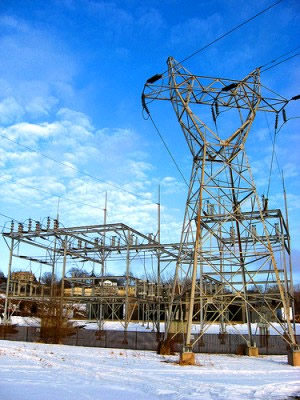
- Recent town of Vail community survey identifies parking as top issue for townies
- Vail Christian High School board buys back bonds, rescues next school year
- Vail Resorts to host Lindsey Vonn celebration in Vail Wednesday, March 31
- Vail Resorts Epic Pass, Summit Pass available through November 30, 2009
- 9 candidates, including 3 incumbents, running for 4 Vail Town Council seats Nov. 3
- Nominating petitions for four open Vail Town Council seats available Sept. 14
- Eagle County commissioners to vote Tuesday on temporary marijuana dispensary regulations
- Vail Town Council rejects ballot question to change council terms
- Polis defends health-care reform at packed town hall in Edwards
- Vail blaze illustrates need for defensible space, roadless rule changes, state says
- All Real News Articles
June 6, 2009 — The Governor’s Energy Office has an ambitious goal of expediting the addition of another 1,000 megawatts of renewable energy generation to Colorado’s electricity grid in the next few years, but the single biggest hurdle may be adding the necessary transmission lines.
Representatives of companies building utility-scale renewable projects like the 8-megawatt SunEdison solar plant in Colorado’s San Luis Valley say sun and wind generation facilities can be permitted and built in under two years, but transmission lines can take more than a decade to become reality.
That transmission bottleneck, which even the Governor’s Energy Office admits is a serious impediment to its “New Energy Economy,” is exacerbated by issues of simple geography.
“You can put wind and solar only where the wind blows and the sun shines, whereas with coal and gas and nuclear, you can build those plants wherever you want and just build a rail spur, or truck in the fuel and you’re in business,” said Craig Cox of Interwest Energy Alliance, a regional association representing top utility-scale wind and solar companies.
“With renewables you have to build exactly where the resource is, and where the resource is in Colorado is where the people aren’t. So in eastern Colorado, transmission was always built for populations of thousands, and what we need is to serve populations of millions on the Front Range and throughout the West.”
The same is true of solar-rich areas like the far-flung San Luis Valley on Colorado’s Western Slope.
Interwest two years ago was instrumental in passing state Senate Bill 100, which allows the Colorado Public Utilities Commission (PUC) to approve transmission construction before the actual generation facility goes online.
The measure also allows utilities such as Xcel Energy to charge customers for that transmission before having to build a rate case.
“But since the passage of that law we haven’t seen much in the line of proactive transmission built for renewables in Colorado by Xcel Energy, which was the primary partner in passing this bill,” Cox said.
There have been two filings for increased transmission since the passage of SB 100: the line from the San Luis Valley to Calumet (near Walsenburg in southern Colorado), a joint project with Tri-State Generation and Transmission, and Xcel’s upgrade of the Pawnee to Smoky Hill line on the Front Range.
Xcel officials argue they have filed transmission plans under SB 100 and taken steps to ensure enough capacity through 2015. Xcel spokesman Joe Fuentes did not comment directly on the perceived transmission bottleneck, but instead referred to a response the utility filed with the PUC to an Interwest motion earlier this month seeking to hasten Xcel in the transmission-planning process.
“In essence, Public Service [Xcel] believes that it has a fundamentally different view of the process than Interwest. Interwest appears to operate by the notion that transmission can and should be constructed well in advance of any actual generation connection need,” the response read. “While Public Service acknowledges that the SB-07-100 framework is different than past planning, there still needs to be some assessment of need and prioritization.”
Fuentes did note that Interwest’s motion to compel more aggressive transmission planning and convene hearings at which Xcel executives would be required to explain the planning process was denied by the PUC.
Interwest attorney Ron Lehr, a former chairman of the PUC, said Xcel is not developing a comprehensive transmission plan or increasing transmission capacity in Colorado nearly as rapidly as it is in Minnesota, where the company is based. Part of the problem, he said, is that Xcel, Colorado’s largest utility, doesn’t coordinate well enough with Tri-State, the state’s second largest utility.
“You have this kind of uneasy coordination between the two utilities who do this kind of work in Colorado,” Lehr said. “If you ask yourself, does the state have a coordinated, long-range transmission plan, the answer would be no, because we have two of them, and by definition if you have two plans, you don’t have one plan.”
Lehr added that planning through 2018 or even 2015 isn’t nearly fast enough to fix the state’s transmission bottleneck to renewable energy resources.
“If it takes five to seven years to build a transmission line, once the planning’s done and the approvals are made, and the planning and approval might take two or three years, then we’ve got what we’re calling ‘just-in-time transmission planning,’ or if you look at it a little more cynically, you would call it ‘not-quite-in-time’ transmission planning.”
![]() Comment on "Lagging transmission capacity keeping renewable sector down, energy experts say" using the form below
Comment on "Lagging transmission capacity keeping renewable sector down, energy experts say" using the form below












